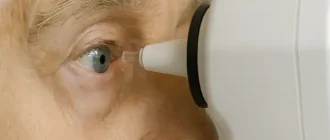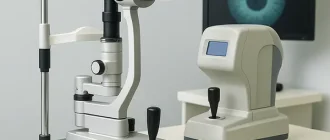If you’ve ever noticed that your vision gets blurry when you glance at the side mirrors or look through the side windows while driving, you’re not alone. This symptom can affect many drivers, especially as they age or if they have underlying eye conditions. In this article, we’ll explore the causes of this problem, its impact on driving, and some practical solutions to help you stay safe on the road.
What Does It Mean to Lose Sharp Vision When Looking at Mirrors?

Loss of sharp vision while looking at mirrors or side windows often means that the eye is struggling to focus on objects at certain angles or distances. This can happen suddenly or develop gradually over time. Drivers experiencing this may find it hard to check for cars in their blind spots or readjust their focus between looking ahead and using their mirrors.
Example Scenario
Imagine you’re driving on the highway, and you quickly check your side mirror before changing lanes. Instead of seeing the car clearly, the image appears fuzzy. This brief moment of blurred vision could delay your reaction, increasing the risk of an accident.
Common Causes of Blurry Vision in Mirrors
There are several reasons why drivers might experience blurry vision when looking at mirrors or side windows. Here are some of the most common causes:
1. Refractive Errors
Conditions like myopia (nearsightedness), hyperopia (farsightedness), and astigmatism can make it harder to see clearly, especially at different distances. Drivers may have trouble focusing on the side mirrors or objects outside the car because their eyes can’t adjust quickly.
2. Age-Related Vision Changes
As we age, our eyes lose their ability to focus on nearby or faraway objects. This is known as presbyopia and is a common problem for people over 40. This condition can make checking side mirrors or windows particularly difficult.
3. Cataracts
Cataracts cause the lens of the eye to become cloudy, leading to blurred vision. For drivers with cataracts, looking at mirrors, especially in bright sunlight, can be challenging and may result in a loss of sharpness in vision.
4. Eye Fatigue
Driving for extended periods can cause eye fatigue, especially if you’re frequently shifting focus between the road and mirrors. Fatigue can blur your vision temporarily, making it hard to see clearly in mirrors.
Statistics on Vision Problems and Driving Safety
Vision plays a critical role in driving safety, and studies show that even mild vision impairments can increase the risk of accidents. According to the American Optometric Association, 90% of the information needed to drive comes from vision. Additionally, about 12 million Americans aged 40 and older experience vision impairment, with many unaware that it affects their driving .
| Vision Impairment Statistic | Percentage of Drivers Affected |
|---|---|
| Drivers with uncorrected vision issues | 10-20% |
| Drivers over 40 with age-related vision problems | 60% |
| Drivers involved in accidents due to vision issues | 23% |
These statistics highlight the importance of regular eye exams and addressing vision problems early to maintain safe driving practices.
Solutions for Drivers Experiencing Blurred Vision
If you’re struggling with sharpness when checking mirrors or side windows, there are several solutions you can explore:
1. Update Your Prescription
Make sure your glasses or contact lenses are up to date. Even a small change in your prescription can dramatically improve your ability to focus on objects at different distances. If you notice difficulty when using mirrors, it’s time to visit your optometrist.
2. Use Anti-Reflective Coatings
Glare from sunlight or headlights can make blurry vision worse. Consider using anti-reflective coatings on your glasses to reduce glare, making it easier to see clearly through mirrors or windows.
3. Adjust Your Mirrors Properly
Ensure that your mirrors are correctly positioned to reduce the strain on your eyes. You should be able to see the lanes next to you clearly with minimal head movement.
4. Take Breaks During Long Drives
If you’re on the road for long periods, your eyes can get tired. Taking regular breaks, especially during night driving, can help reduce eye fatigue and improve your focus.
5. Consider Surgery for Cataracts
If cataracts are affecting your vision, surgery may be an option. Cataract surgery is a common and highly effective procedure to restore clear vision and can make driving safer.
Why Clear Vision is Crucial for Safe Driving
Clear vision is critical not only for reading road signs but also for detecting hazards in your blind spots or peripheral vision. Any loss of sharpness in these areas can delay your response time, leading to potentially dangerous situations.
For instance, when you’re merging onto a busy highway, quick and accurate visual checks are essential. If your vision is compromised, it might take you a second longer to identify an approaching vehicle, which can be enough time for an accident to happen.
Final Thoughts
Loss of sharp vision when looking at mirrors or side windows is more than just an inconvenience—it’s a safety issue. Addressing the root causes, whether they are refractive errors, cataracts, or fatigue, is essential for maintaining safe driving habits. Regular eye exams, updated prescriptions, and using anti-glare lenses can all help improve your vision on the road and reduce the risk of accidents.
If you’re experiencing any changes in your vision, don’t wait to get it checked out. After all, clear vision is one of the most important tools for safe driving.





